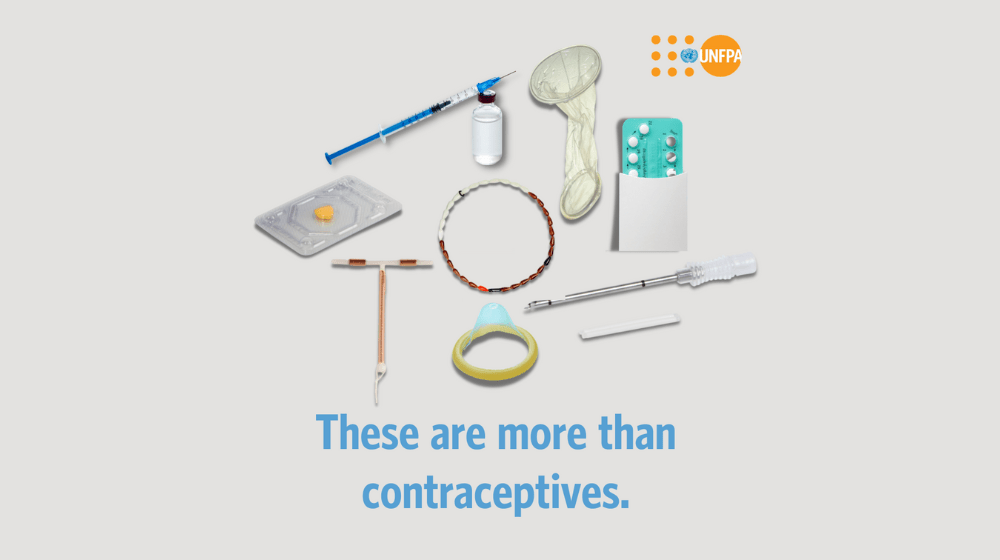World Contraception Day, observed on 26th September every year, is a global campaign launched in 2007 with the ultimate vision of ensuring that every pregnancy is wanted and young people are equipped with the knowledge to make informed choices about their sexual and reproductive health needs
ICPD and India’s Progress
The International Conference on Population and Development (ICPD), which was held in Cairo in 1994, pushed for a paradigm change away from the earlier emphasis on population control and toward sustainable development. In order to ensure that every person matters and their needs are satisfied, it urged the globe to look at population beyond mere statistics and make necessary expenditures on expanding choice, quality and equality. ICPD had a deep influence on India's policies, tactics, and goals, putting the spotlight on the significance of reproductive health and rights of people.
India was one of the first countries to have a National family planning programme. India's National Family Planning Programme and the National Population Policy 2000 continue to place emphasis on the necessity of addressing the unmet need for family planning (defined as the percentage of women who do not want to have children or want to delay childbearing but are not using any method of contraceptive). Further, India having reached replacement level of fertility, the emphasis of the Family Planning Programme now is to improve maternal and child health. Along with broadening the range of accessible contraceptive options, social issues like age at marriage, age at first birth, and girls' educational attainment were given significant consideration in the strategy.
Fertility, family planning, and demographic indicators have shown considerable improvement over the last few decades as a result of the policy and programmatic measures taken by various governments. For instance, India’s population growth rate declined from 24.7 percent between 1971-81 to 17.7 percent in 2001-2011.
The introduction of much-awaited new contraceptive methods in the public health system, improvement in family planning services including the Mission Pariwar Vikas in high fertility districts, counselling to clients at their doorsteps by ASHAs as well as behavior-change communication programmes by government and other stakeholders have all resulted in positive outcomes.
Remaining Challenges
Building on the progress made, newer strategies are needed to tackle some of the key issues.
- For instance, disparities in access to services across states and between regions need to be reduced . Various Indian states are in varying degrees of population stability and demographic transition. Five states, including Bihar (3.1), Meghalaya (2.9), Uttar Pradesh (2.4), Jharkhand (2.3), and Manipur (2.3), still have a total fertility rate (average number of children that a women would give birth to in her life time) that is more than the replacement level fertility (2.1).
- The high burden on women for undertaking family planning must be eased. According to the fifth round of the National Family Health Survey, the acceptance of sterilization among married women in India was 37.9 percent; the equivalent figure for men who have had a vasectomy was 0.3 percent. Female sterilization contributes to 68 percent of total contraceptive use across various methods. Without having the agency or autonomy to make their own health and fertility decisions, women are burdened with an unfair responsibility to take care of their reproductive and healthcare needs. There is an inadequate focus placed on choice and quality of treatment, which has caused a lopsided mix of contraceptive methods, with women’s sterilization becoming the most prevalent method.
- Given India’s large young population, young men and women must have access to a basket of contraceptive choices, that suit their needs and preferences. For this, barriers related to access, fears and misconceptions associated with contraceptive methods, providers’ biases and incentives, lack of awareness among clients and frontline health workers, geographical and economic challenges and restrictive social and cultural norms need to be addressed. Alongside, adequate investments in improving family planning service delivery, temporary and long-term birth-control methods, budgetary outlay and expenditure for family planning, uninterrupted commodity supplies at facilities and the community level, and extending the range and reach of contraceptives to the last mile are much needed.
- Investments in social and behavior-change communication strategies that encourage candid discussions about gender and family planning need scaling up based on insights and lessons. Such communication can also enable couples to communicate and make decisions more fairly, which may lead to an increase in the demand for and usage of contraception. The introduction of Long-Acting Reversible Contraceptives in the public health system, such as implants, is long overdue.
Conclusion
Family planning programmes across nations have demonstrated a far-reaching impact on gender equality, women’s empowerment, maternal and child health and economic growth. Expanding the range and reach of contraceptive choices can help India meet the goals set out in national policies, and for the achievement of Sustainable Development Goals. Committing to upholding quality of care, voluntary choice, and addressing the preferences and needs of users, are all determinants of an effective family planning programme, which is critical to India’s future.
By Poonam Muttreja, Executive Director of Population Foundation of India and Andrea Wojnar, Resident Representative, UNFPA India
Originally published in ET HealthWorld


